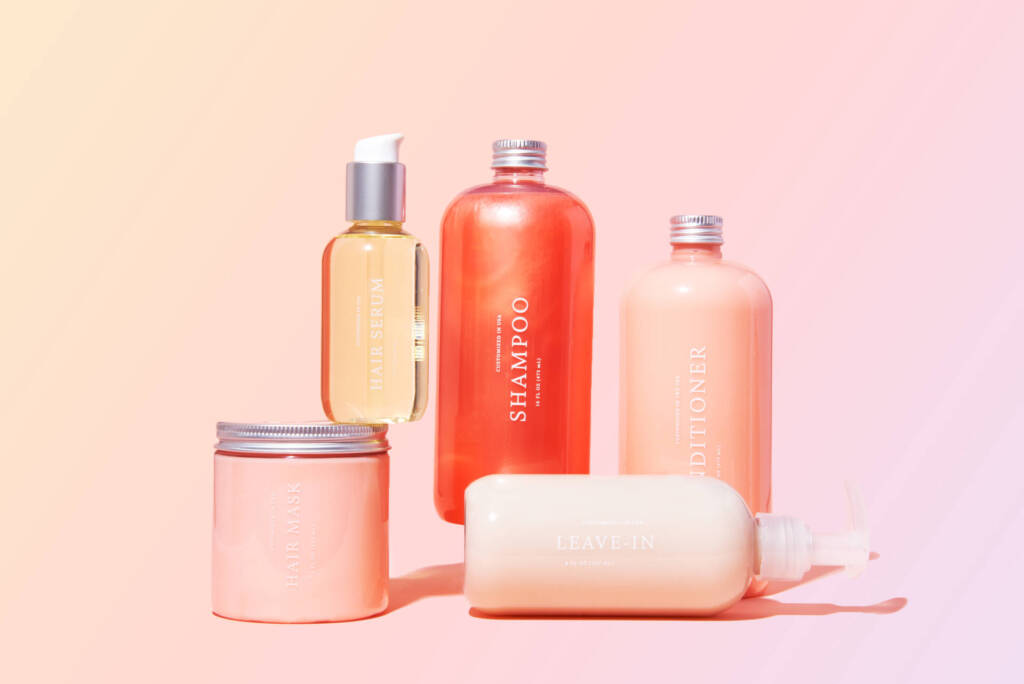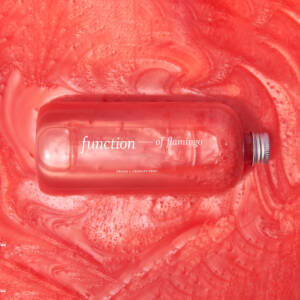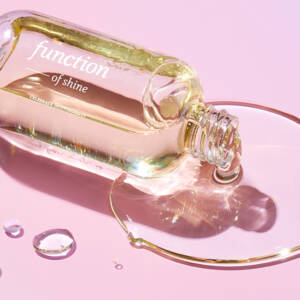Should I use a deep conditioner or a leave-in? Which ingredients work best at hydrating my strands? Are silk pillowcases better for my hair than cotton ones? If you find yourself scratching your head over questions about how to moisturize hair, you’ve come to the right place.
In this guide, you’ll discover 16 tips on how to moisturize your hair for soft, supple strands. From which product ingredients to look out for to the various moisturizing techniques you can use, this is the guide you’ll want to bookmark.
How to Moisturize Hair With the Right Ingredients
How to moisturize hair depends heavily on the product formulations you use. When scanning the ingredient list on the back of your products, keep these three things in mind:
1. Shun the Sulfates
Many of us equate a frothy lather as a shampooing job well done. Unfortunately, the suds could be what’s keeping moisture out of your fibers. Sulfates, which give haircare products their foamy bubbles, are notoriously drying on the hair strands and scalp. When scanning the ingredient list, avoid products with words like “sodium lauryl sulfate” and “sodium laureth sulfate.”
2. Load Up on Humectants
Instead of sulfates, what your mane really needs is water-loving humectants that can bypass the hair cuticle to hydrate your fibers from the inside out. These lightweight ingredients are ideal for fine hair, low porosity hair, and oily scalps, as they won’t leave a greasy residue behind. When looking at the ingredient label, two worthy options include aloe vera and glycerin, which may appear in products specifically formulated for lightweight moisturizing.
3. Embrace Emollients and Occlusives
If your hair is on the drier side, you’ll probably have better luck with emollients and occlusives. These heavier moisturizing substances form a protective film on the cuticle to prevent moisture loss. They are a perfect match with high porosity hair and curly hair types (aka type 3 hair), which typically require hydration by the boatload. So how to moisturize hair with occlusives? Try coconut oil, shea butter, and sweet almond oil.
How to Moisturize Hair With the Right Products
Once you’ve identified the ingredients that work well for your dehydrated strands, track down the right haircare products for dry hair.
4. Choose a Moisturizing Shampoo and Conditioner System
Start with a moisturizing shampoo and conditioner duo that are sulfate-free. Take our hair quiz to find custom-built solutions for your moisture-starved mane. Function of Beauty’s haircare range offers hydrating hair goals like:
- Deep condition
- Hydrate
- Replenish hair
- Anti-frizz
- Shine
This way, your shampoo and conditioner are specifically formulated to quench thirsty fibers according to your unique hair needs.
5. Don on a Hair Mask for Deep Conditioning
Sometimes, your hair needs more than a rinse-out conditioner. This is where deep conditioning once a week (or more) can supercharge your hair with moisture. Typically thicker in texture, like heavy cream or a mask, deep conditioners sit on your tresses so the hair shafts can drink their fill.
One good option is Function of Beauty’s custom hair mask — it’s formulated with Japanese sake extract, argan oil, and jojoba ester oil.
Pro tip: If your strands are seriously dried out, use a deep conditioner in place of your daily conditioner. Apply the mask from the ends of your hair to the mid-shafts (or all the way to the roots for those battling a dry scalp).
6. Slather on a Leave-in
Washing off your basic and deep conditioners in the shower doesn’t mean you have to leave your tresses naked all day. Saturate them with moisture 24/7 using a leave-in conditioner. Try our custom leave-in, which is infused with avocado oil, argan oil, coffee extract, and a custom blend of naturally derived and synthetic ingredients. For the cherry on top, it’s lightweight enough not to flatten your ‘do.
7. Seal in Moisture With a Serum
How to moisturize hair and keep it dewy-looking? Try a hair serum as it coats your strands in a protective film to retain water inside the shafts. For a non-greasy option, our custom hair serum features lightweight hair oils — argan, jojoba, and sunflower — to:
- Reduce frizz by 70%
- Increase shine by 26 times more than untreated hair
- Improve detangling by 75%
- Thermally protect hair from damage up to 400 degrees
Basically, it’s the styling product your locks will fall in love with.
8. Spritz With a Hydrating Hair Mist
If you’re out and about and urgently need to refresh your hair, a lightweight hair mist comes in handy. Aside from being a chic hair fragrance, the spritz keeps your locks soft without being too heavy. Keep one in your bag for a mid-day refresh. You can also use it on damp hair for an aromatic boost.
How to Moisturize Hair With the Right Techniques
You’ve got the ingredients and products in your haircare routine down pat. Now, it’s all about the best practices to keep dry hair at bay.
9. Eschew Overwashing
ICYDK, there is such a thing as washing your hair too much. Hot water and shampoo surfactants can strip away much-needed sebum for well-oiled tresses. Our in-depth guide on “How often should you wash your hair?” will help you find your sweet spot among the suds.
Pro tip: Replace hot water with cold or lukewarm water to avoid drying out your hair even more.
10. Trust in Co-Washing
Natural hair types, which we all know are especially prone to dryness, swear by co-washing. It’s a hair washing technique that cleanses and moisturizes your locks with conditioners instead of shampoos (goodbye, sulfates!). But that doesn’t mean any rinse-out conditioner will do. A co-wash is specially formulated with non-drying cleansing agents to help your mane retain more of its natural oils. At the same time, it enhances hair shine and smoothness with conditioning agents.
That said, co-washing may not be ideal for those with dandruff, fine hair, or oily scalp. This is because co-washes have milder cleansing agents than the average shampoos, and may not remove buildup fully.
Pro tip: In between co-washing, use a clarifying shampoo to eliminate lingering dregs of natural and product buildup on your scalp.
11. Turn to Pre-Pooing
Those who wrestle with knots and tangles, as well as a lack of moisture, should consider pre-shampooing (pre-pooing). It involves applying a hair treatment (like a deep conditioner or a hair mask) before shampooing your mane.
Pre-pooing offers three notable benefits in the name of hydration:
- Slathering on a deep conditioner before shampooing protects your strands from the oil-stripping agents (read: surfactants) present in most shampoos
- Deep conditioning prior to shampooing makes it way easier to detangle snarls and knots with minimal breakage and pain
- Letting the hair treatment sit on your locks for the recommended amount of time helps add moisture back into parched fibers
Once you’ve rinsed off the treatment and continued with your usual wash routine, your hair will likely be softer, smoother, and more hydrated than before.
12. Bank on the LOC Method
The LOC method (leave-in, oil, and cream) piles on the hydration to envelop your hair shafts in moisture. Start by applying a leave-in to just-washed or refreshed hair. Next, spread your fave hair oil throughout your tresses, but be careful to avoid the roots and not go overboard as you don’t want a flat hairstyle.
Lastly, seal in the moisture with a hair cream or lotion. What you’re essentially doing is adding ample moisture to the hair shaft with the leave-in, and keeping moisture in with the oil and cream. Buh-bye dried-out, frizzy hair!
Pro tip: If you find the oil and cream a tad too heavy for your mane, swap them with a hair serum, which will have a lighter texture.
13. Step up the Warmth
To help your in-shower hair moisturizers soak into your tresses more efficiently, try this simple trick to open up the “pores” on your cuticles:
- Apply your moisturizing haircare products, such as rinse-out conditioners and deep conditioners
- Carefully bundle your wet hair into a shower cap
- Microwave a towel or soak it in hot water for two minutes
- Wrap the towel around your shower cap
- Wait for the recommended amount of time before rinsing off the product
Alternatively, you can skip the towel and turn on the hot water in your shower stall. Close the door to create a sauna-like environment, carefully making sure the water doesn’t touch your shower cap.
14. Favor Silk, Satin, and Microfiber
Cotton pillowcases can be drying on the hair as the highly absorbent material wicks away the natural oils coating your strands — research has shown that cotton absorbs moisture significantly faster than silk. That’s why we recommend switching your pillowcases to silk or satin instead. What’s more, the smooth surfaces of silk and satin mean they’re less likely to rub against your strands, which can create snags and split ends. No more bedhead come morning!
On top of that, it’s a good idea to switch your cotton towels for microfiber ones. Science explains that microfibers are “one hundred times finer than human hair,” which means they are much gentler on your mane. Microfiber’s pill-resistant nature also equals minimal friction and frizz — all good things when it comes to keeping your hair smooth and manageable.
15. Use Hot Tools Sparingly
Heat styling, in the form of blow-dryers, flat irons, and more, spells disaster for your hair in more ways than one. According to a 2011 study, blow-drying hair at roughly 117 degrees Fahrenheit is enough to induce cracks in the hair cuticles. At 203 degrees, the protective cuticle layer becomes severely damaged with holes, resulting in high porosity hair. In this case, your hair shafts are too frayed to keep moisture in, inevitably causing dry hair.
At Function of Beauty, we heartily stand by our advice of using heat styling tools sparingly. We’ve even created a list of no-heat hairstyles to keep your ‘do looking good without risking heat damage.
That said, if you still need to reach for a hot tool occasionally, keep these golden rules in mind:
- Always apply a heat protectant (like our hair serum) beforehand
- Hold the blow-dryer at least six inches away from your locks, and don’t concentrate on one spot for too long
Pro tip: To speed up the drying process, blow-dry your hair for a bit, then air-dry it the rest of the way.
16. Refrain From Chemical Treatments
If your hair is already dehydrated, or you want to maintain its moisture levels, stay away from harsh chemicals. In other words, give hair dyes, bleaching, straightening, and perming a pass. Our mantra: love your hair the way it is.
For those with chemically processed hair, add moisture back into your fibers with the moisturizing hair products we’ve covered. Also, use a purple shampoo to prolong the longevity of your new hair color. Doing so minimizes the need for frequent touch-ups, thereby protecting your strands from further chemical exposure.
Soft, Hydrated Strands: Here You Come
Learning how to moisturize hair need not be a tall order. Chances are, you’ve already got some — or most — of the hydrating products and techniques in place. Case in point: Your shower caddy is probably home to conditioners and hair masks, and you’ve most likely tried the LOC method at least once in your life.
Use our guide to spot areas of improvement in your haircare routine. Perhaps you need to switch out some of your products for sulfate-free ones. Function of Beauty’s full range of sulfate-free, custom-built haircare solutions can help you with that. Meanwhile, review your routine and see if you’re abiding by the dos and don’ts listed above. All it takes is a little effort and patience to achieve your healthy hair goals.





